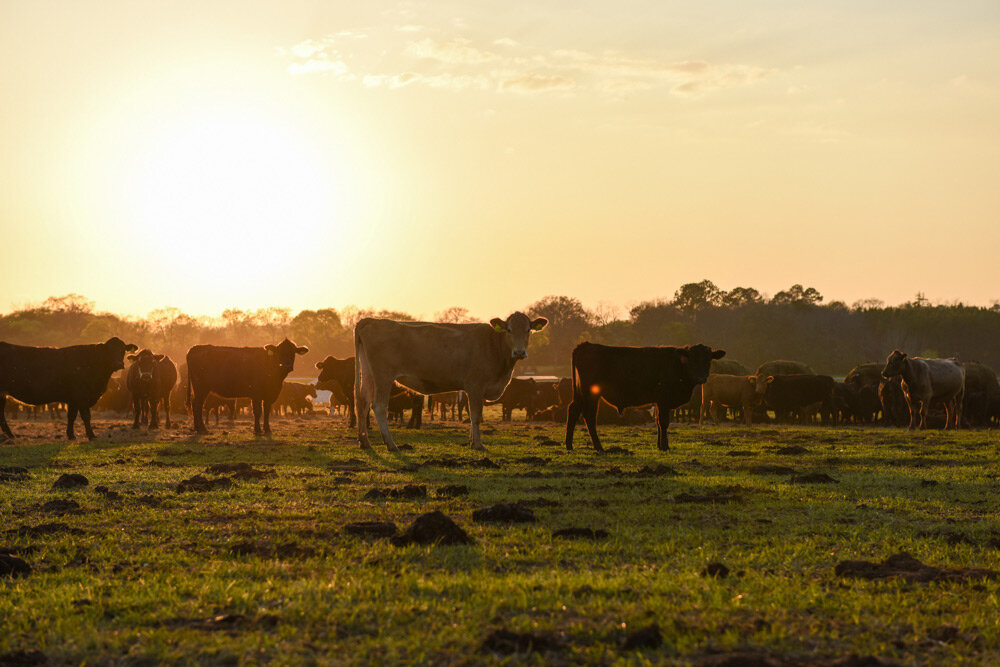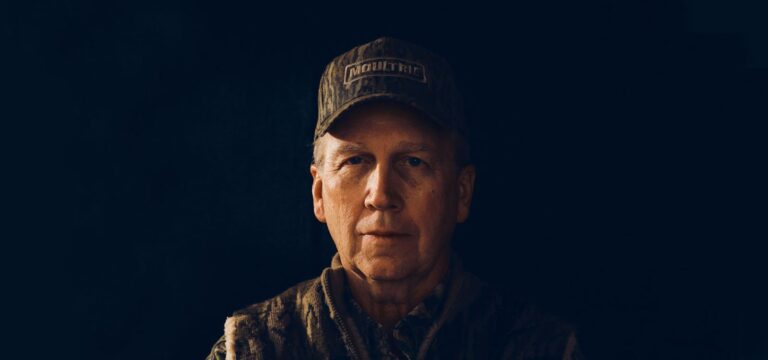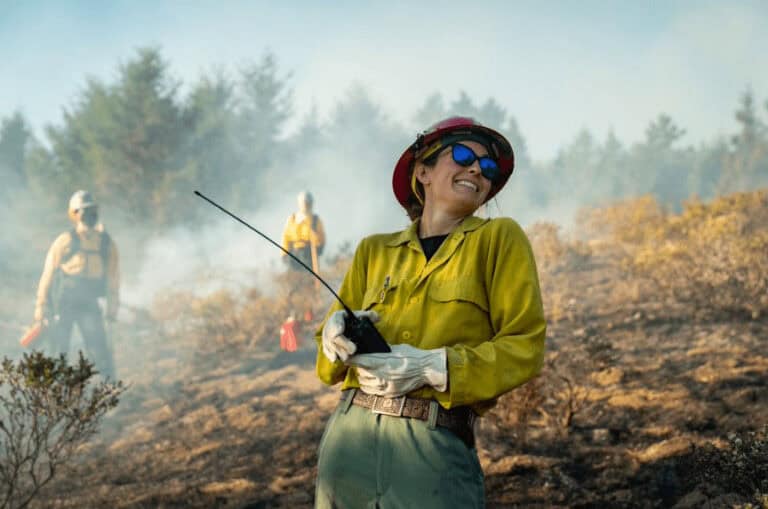When it comes to soil health, General Mills, and their brands like EPIC Provisions aren’t afraid to get their hands dirty. In March of 2019, the major food conglomerate committed to advancing regenerative agriculture practices on 1 million acres of farmland by 2030.
General Mills isn’t simply writing a check and hoping the problems reconcile themselves – instead they are providing the methods and mentorships to mitigate the inherent risks for farmers and ranchers in their key sourcing regions to try something new and lean into their inherent stewardship of the land.
Practices which they’re backing up with extensive research by providing in-house scientists the freedom, agility and resources to focus on long-term development with a systems approach in mind. These kinds of opportunities don’t grow on trees for scientists such as Steve Rosenzweig, Ph.D., a soil scientist at General Mills who drives adoption of regenerative agriculture systems and measures the effects on greenhouse gases, soil health, biodiversity, and farmer economic resilience.
He’s now able to forge ahead unfettered by a limited number of grants and short-term projects. And what has he discovered in the American heartland? That agriculture is part of the answer we’ve been searching for in regard to biodiversity, climate change, water and soil health.
KATIE: Tell me what brought you to General Mills. You’re the first soil scientist to be hired by a food company, is that correct?
STEVE: I thought I would end up like most soil scientists, doing research at a university or at the USDA. I saw the job posting come through that General Mills wanted a soil scientist, and I thought, ‘what does General Mills want with a soil scientist?’ I applied and had a phone interview with my now boss and it was basically me interviewing him. GMI had been on a similar journey to the one that I was on, which is seeing how soil is connected to all of these things that we care about. That it’s the foundation for the food system, that it influences everything from water to climate, to biodiversity, to the farm, the profitability, and resilience of the farming business.
And they wanted to help to bring an element of research and advance the science of regenerative agriculture, but also to help invest in sourcing regions and supply chains to help farmers transition to these regenerative systems. And that was exactly what I wanted to do.
Working for General Mills has given me a lot more freedom and agility than I might’ve had doing research somewhere else. We still work closely with universities but, to get all this work done, I’ve also been able to assemble kind of a ‘dream team’ of researchers to focus on all aspects of this holistic system, which is much harder to do when you’re dependent on a grant to do a very specific or short-term thing. I had much more flexibility to look at the long-term and to look at the system as a whole. I feel really lucky to be able to do it.

That is such an incredible opportunity. We use words like regenerative and sustainable these days. What do we actually mean by regenerative grazing for those of us who don’t know, and why is that important to biodiversity and climate change?
Regenerative grazing is an umbrella term that might include different approaches like adaptive stewardship or holistic grazing. These are different approaches to how you manage animals, in a grazing system. So holistic grazing is a method of grazing encouraged by the Savory Institute where ranchers carefully monitor the amount of time that herds of livestock will spend in little sections of pasture. As opposed to the conventional system where cattle can just roam free and eat their favorite plants over and over and over again – which can lead to overgrazing and the degradation of pastures over time. In the regenerative grazing model, the cattle graze for shorter periods in tight groups that mimic the predator-prey dynamic, and the way large herds of bison migrated through the Prairies historically.
Using this system, you can leverage the grazing to stimulate plant growth, and by keeping these animals close together, and moving them frequently the pastures have time to rest. One thing that we know you need for healthy grassland is time for the grass to recover appropriately after it’s grazed. When managed properly, these ruminants are powerful partners to help regenerate grasslands and improve soil health.
Grasslands are the most endangered ecosystem globally because they’ve produced these incredibly rich soils that are really productive for croplands. We’ve plowed up much of the world’s grasslands and converted them to agriculture, but really healthy, productive grasslands provide important habitat for wildlife. These grasslands are huge reservoirs of carbon that can keep greenhouse gases out of the atmosphere. They’re really important to keep intact and also to manage properly so they can retain all of those great things that healthy grasslands do.
What’s the difference between Sustainable and Regenerative when it comes to soil health?
Sustainable is eliminating those things that are detrimental, which is isolating individual parts of the system. With Regenerative principles we’re taking a whole systems approach, a holistic approach to managing these ecosystems, to restore their health and improve their function. You need a systems approach to managing the ecosystem. And that’s what a farm is. It’s an ecosystem and the reductionist approach doesn’t really help us address these larger, more systemic issues.
So it’s more instead of addressing the symptoms, Regenerative practices are addressing the root problem?
Right, exactly.
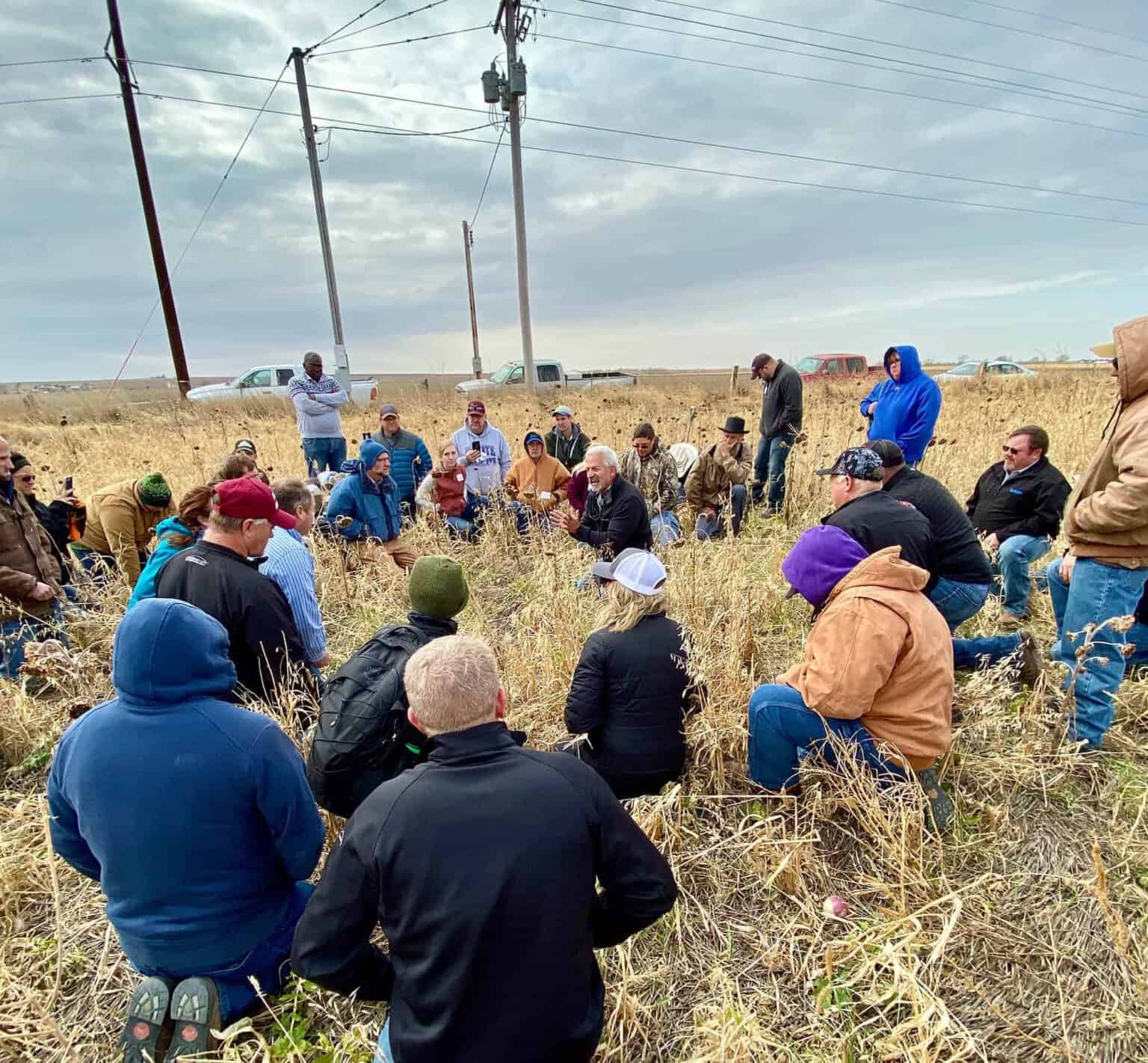
General Mills has committed to advancing the soil health of 1 million acres. Tell me a little bit about how that began and what you’ve learned along the way as you work towards this goal.
It goes back to 2000 when we acquired the Cascadian Farm brand, and Gene Kahn, the founder of Cascadian Farm was really passionate about soil health — he’s one of the pioneers of the organic movement. I think he brought that early element of soil appreciation into General Mills’ culture. In 2014-2015, we had the opportunity to truly invest in the soil health movement as a whole. We helped establish organizations like the Soil Health Partnership and the Soil Health Institute. Our Chief Sustainability Officer at the time, Jerry Lynch, saw the potential of soil to help General Mills be a force for good and improve the environmental impact of our business. And in 2016, General Mills acquired the purpose-driven brand EPIC Provisions to further drive positive impact.
So that’s why we were at the forefront of those early investments in soil health. Around that time, we were the first company in any sector to make a climate target approved by the science-based target initiative to reduce our footprint. We’ve recently updated that commitment to reduce our footprint by 30% by 2030, across our full value chain from farm to fork to landfill and having a third party audit our climate footprint. We found that agriculture is 60% of our overall footprint. So with this interest in soil and understanding that we have to address emissions in our agricultural sector we started listening to the farmers in our sourcing regions who were able to sequester carbon, and reduce their reliance on fossil fuel-intensive fertilizers.
They were already figuring out ways to do it, and it all led us to the regenerative ag movement. This combination of principles that can come together in a system to regenerate these ecosystems, sequester carbon and pull carbon out of the atmosphere. Plants do this naturally through photosynthesis, but regenerative ag can help to keep that carbon in the soil where it feeds this network of life.
Those steps led us to see that regenerative ag can help us not only address the climate goal that we set, but also address supply chain resilience – the resilience of the front end of our business as a food company, and support the farmers and ranchers that make our business possible.
It was just a no-brainer for us, to plant our flag with this commitment and say, regenerative ag is a very important approach that can help us do a lot of good.
General Mills didn’t come up with regenerative agriculture or invent it. These are principles of land management rooted in indigenous wisdom – and it’s already been gaining steam in agricultural communities. And we’re trying to figure out a way to grow this movement, grow its potential for generating ecosystems and communities, and figure out how to invest in that and advance science at the same time.
So what does this look like on the ground? Do you have select dairies and farms that you’re working with, or are you working with communities to help implement this on like a myriad of farms and ranches?
We started by looking at where we sourced ingredients, and what partnerships with farmers in our key sourcing regions we could generate. As a food company, we don’t own farms or have many direct relationships with farmers, so we rely on suppliers, whose mills or elevators, aggregate grain from across the region. We’ve tried to build stronger relationships with the communities and the farmers where these ingredients are grown.
We’re engaging with farmers and communities in a variety of different ways. For example, in Canada, North Dakota, Kansas, and Michigan, where we have oats, wheat, and dairy, respectively, we are partnering with a group to provide one-on-one coaching to farmers. These coaches have experience with regenerative ag. In most cases, they’re farmers themselves from these areas that are implementing regenerative systems, but they also have a passion for mentorship and education. We’re pairing up farmers one-on-one with these coaches that can help them develop their regenerative management plan for three years and implement that.
We know that farmers that are going down this regenerative path sometimes feel like they’re the only ones in their area doing it. They have to try and fail and learn to do all of this on their own, which is so isolating. To help address that, we’ve created a social support system, creating these networks of farmers, all moving down this path together, helps provide confidence, but also helps them learn faster about what works and what doesn’t work in their unique context.
We just launched a partnership with the National Fish and Wildlife Foundation to provide cost share and technical assistance to farmers. We’re really trying to minimize the risk of experimentation and help remove barriers to entry. It’s really hard, a lot of farmers are just trying to make it to that next year – economically it’s tough to try to take big risks. So if you’re cost-sharing for different practices, we can minimize that risk and enable them to experiment, but also provide that one-on-one coaching and technical assistance that give them best chance of success.

The last thing I mentioned that we’re working on is as an ecosystem service market payment. So farmers, in addition to providing crops that have value, can also provide a variety of services to society that are of value – climate change mitigation, providing biodiversity, clean water – those are things that right now a farmer might be generating through these regenerative systems, but that society has no way of putting a value on. And by creating an ecosystem service market, we can pay farmers for generating those outcomes through regenerative systems and provide that economic incentive for more farmers to start implementing these regenerative systems and producing those ecosystem services.
In one of your articles, you mentioned that cultural norms require ag to degrade the soil. So what do you think is the most effective way to reroute those cultural norms to restore soil quality?
I think some cultural norms do. For example, here in Minnesota, a sign of a good farmer is if you have a black tilled field in the fall where it’s just completely bare soil. The reason why that is, is because it’s really cold and wet. Going into the spring, you want to be able to plant your crop as early as possible because we know the sooner you can plant, and the sooner that soil warms up, the higher yields are going to be, the bigger crop you’re going to be able to grow ultimately. So farmers will till these fields until they’re completely black, the soil is exposed so that it can warm up faster, absorbing that sunlight in the spring.
That’s what a lot of farmers think the field should look like in the fall, but also it’s not great for the soil itself, bare exposed soil can easily erode off of the fields. We have to change this perception that you want a black field going into the winter. If this ground stays covered at all times, we’ll have a chance at reversing the degradation and regenerating the systems.
Farmers inherently have a strong ethic of stewardship, they see themselves as stewards of the land. That’s a strong motivation for a lot of farmers that are implementing regenerative ag because they want to do the thing that is going to improve the health of their systems so they can pass it down to future generations in better shape than when they got it. These kinds of cultural norms can sometimes be at odds with each other, but reconnecting with that stewardship ethic is going to be an important part of helping more farmers overcome these things that are uncomfortable. If you’ve never had a field covered in the fall, to do that it’s a big risk and it’s something that’s scary to try. It’s going to take a combination of approaches and practices to overcome a lot of those mental and emotional barriers.
It’s really hard to convince somebody to change their method when their mentality is ‘This is how we’ve always done it and it’s always worked.’ While you’re working with farmers and ranchers to implement these better systems, how do you think we alter the outside negative perception of farming?
People generally trust that farmers and ranchers are doing the best they can do so I don’t think there’s a lack of trust in farmers, but I do think we have a positive story to tell in regenerative ag that agriculture can be part of the solution to a lot of the biggest issues in society today. That’s a powerful story to tell that will resonate with people, to connect them with agriculture as part of the solution to climate change, part of the solution to reversing biodiversity loss.
Part of what we can do at General Mills is to be that bridge and tell those stories and highlight these cases of regeneration. It’s more so just engaging people who don’t think about it all that much or find it interesting because there are lots of different ways of caring about where your food comes from.
I like that you said that there’s a story there that needs telling. I grew up on a cattle ranch, and in the nineties, my dad would go to Allan Savory’s holistic ranch management classes, practices which weren’t being discussed in our community at the time. Today I feel like terms such as holistic and regenerative are really widespread. What do you think caused it to take off in the last five to 10 years where it wasn’t back in the nineties?
I’ll preface it by saying I don’t know, but I think it’s a paradigm shift that the success of the farmer or ranch business is tied to the health of the land. Historically we’ve viewed conservation as a concept that’s nice to do, but it might be a trade-off with the profitability of the business. And really what we’re understanding is that the health of the business is tied to the health of the land. We see this increasingly just how important it is to have this resilient, healthy ecosystem to withstand those weather changes that we’re seeing as a result of climate change.
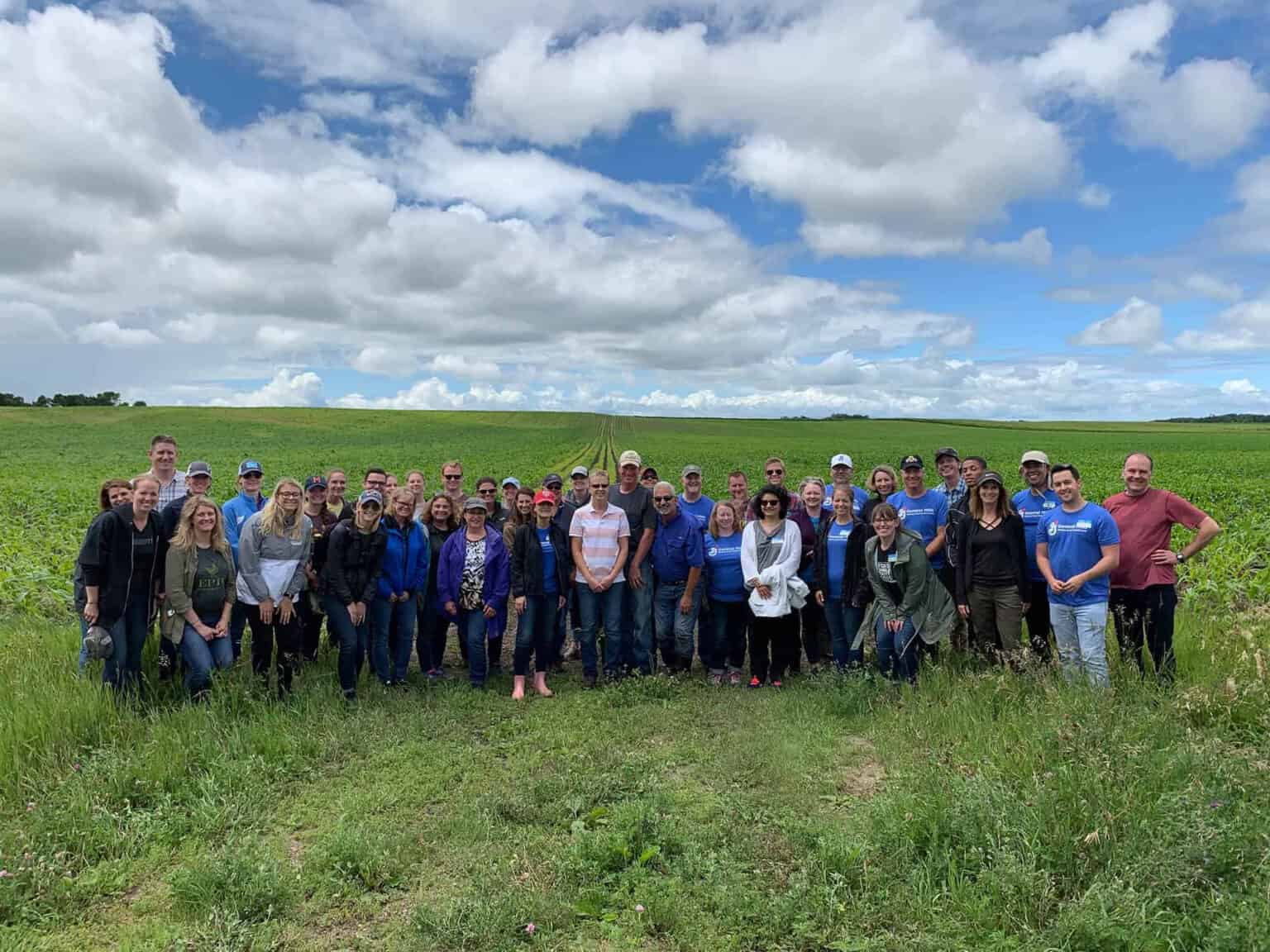
I wondered in part, if it was because of programs like this we started incentivizing it and putting a monetary value on those important things to make it easier for people to value it.
I think that’s it’s sort of like a chicken and the egg, because the food industry as a whole has learned about the potential of regenerative ag from the farmers and ranchers and people doing it. And those people have been doing it because they see that it’s the right thing for their land and their business. So now we can help to accelerate that and help more people to see those outcomes and bring it to more people, through programs like this. Hopefully, it’s kind of the new conventional, right?
That’s the end goal for sure. Tell me a little bit about the Land to Market program.
The Land to Market program, of which EPIC Provisions is a founding partner, is a certification put out by the Savory Institute. It certifies that the land has undergone an ecological outcome verification. So the farmers and ranchers themselves are monitoring a set of ecological outcomes on their farms, looking at how soil and biodiversity and these landscape functions are performing over time. It’s a way of actually tracking regenerative principles and practices that they’re putting into place to improve the health of the system, which is ultimately the goal.
What’s great about The Land to Market and the ecological outcome verification is that we’re verifying the outcomes that we’re ultimately interested in are taking place.
That’s been a strong theme of General Mills’ definition of regenerative agriculture is that it is about outcomes, right? There are principles of regenerative agriculture that farmers anywhere can implement to help regenerate these ecosystems. And the specific way you go about that is so context-specific. It has to be flexible and adaptable to each farmer or rancher’s unique context. And it’s really these outcomes that we care about. So by measuring and verifying that outcomes are improving, that’s how you can tell all of these different outcomes are regenerated.
The new Epic beef barbacoa-inspired bar is the first Epic bar to launch with the EOV seal, what does this mean in terms of possibility within the beef production industry? Is this setting a precedent that they should be required to meet? Or is it just a niche market within its own?
I think what regenerative ranchers as a whole are demonstrating is that by changing the paradigm of how they manage these ecosystems, they can have positive outcomes. I think that what EOV is demonstrating is that ranchers have the power to improve the environment by the way they manage animals and manage the land. I think an important signal for the entire meat production industry to realize is that we have the power to improve that system.
It’s raising the bar. Who are the forefathers of Regenerative agriculture that you admire most or people that have inspired you in your chosen field?
My introduction to regenerative ag came during my time in grad school, I was working with farmers in Eastern Colorado, and Western Nebraska. My goal was really to find out how you can regenerate these highly degraded agricultural systems in such a dry environment. These were two regions where the dust bowl happened, one of the greatest ecological disasters in our history, and if you can farm this way here, you can do it anywhere because of how dry it is.
I met a group of farmers that were pushing past what conventional wisdom said was possible in those systems. They were sequestering carbon, they cut their chemical use in half, they’re producing 60% more food than their neighbors. And they were referencing folks like Gabe Brown and talking about other kinds of big forces in the regenerative ag movement.
But I realized it’s not only just white people who are doing these things. I think indigenous communities are the real forefathers of regenerative ag.
When you look at the ways indigenous people used to move herds of bison using fire and everything from agroforestry to silvopasture, it’s indigenous peoples who did it first. So I think recognizing them as the forefathers of this movement is important.
How do you think we can change our consumption habits as customers to support a more regenerative future?
I think it’s just supporting farmers and brands who keep the planet and people in mind. I would encourage anybody to visit a farm and find out who’s producing food in your local community and be curious and ask questions. It’s hard to just read about it and get it. I think you have to go out there and see it.

EPIC is a committed supporter of the legendary Savory Institute, a global network of conservation-minded farmers and land managers facilitating large-scale regeneration of the world’s grasslands and the livelihoods of their environments through holistic management. This relationship yielded the first-ever EPIC bar made with beef verified by the Savory Institute’s uncompromising Land-to-Market program. Developed in collaboration with leading agricultural scientists and conservation-minded researchers, the EOV seal on the new EPIC Beef Barbacoa-inspired Bar establishes a new benchmark for transparency and quality.
This distinctive new bar checks even more boxes for the most demanding eater. It’s Whole30 approved, paleo-friendly, gluten-free, and features 11 grams of protein. As more and more seek greater balance with the world’s food sources, mother nature continues to provide.
We’re honored to showcase this innovation in our food supply and provide Modern Huntsman readers with a 20% discount on all EPIC bars. Simply use HUNTSMAN20 through 5/1/21 at epicprovisions.com. It’s another way EPIC proves out their belief that everyone deserves food. These bars don’t last long in our offices and won’t last long in your pantry, field pack, or soft-shell pocket. Give them a try and let us know what you think.
